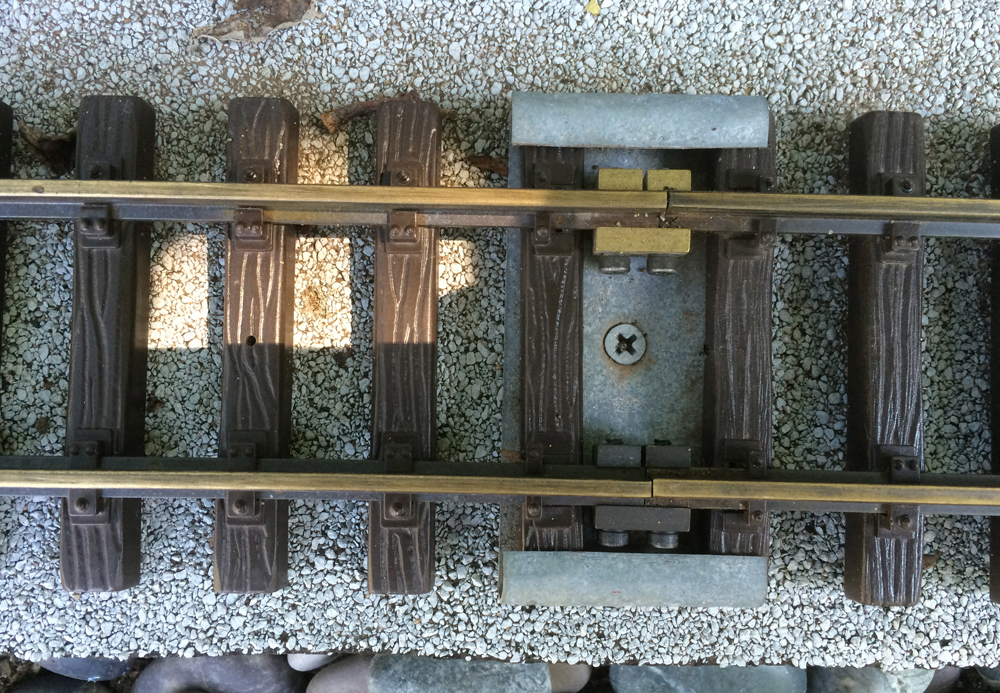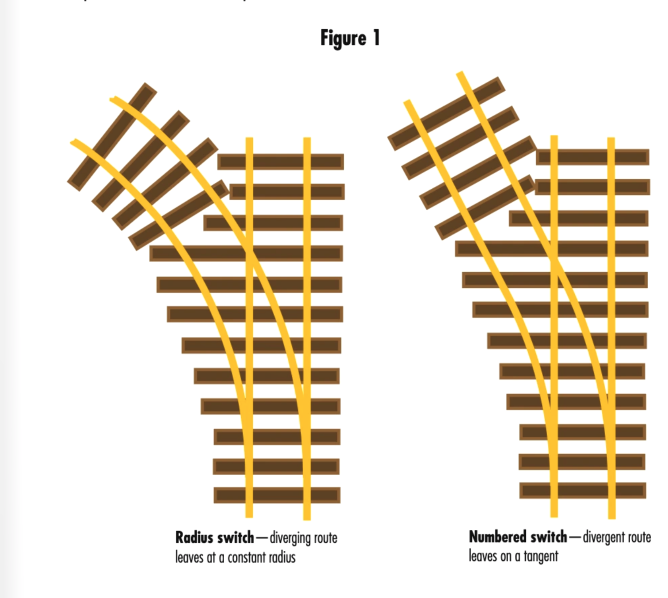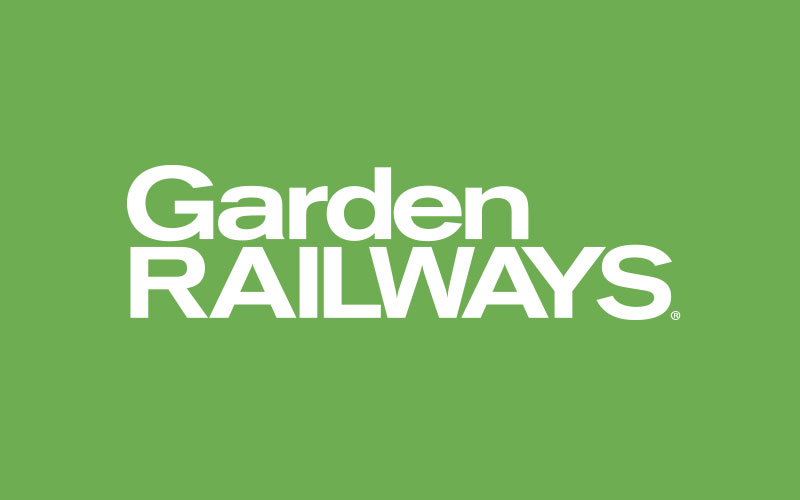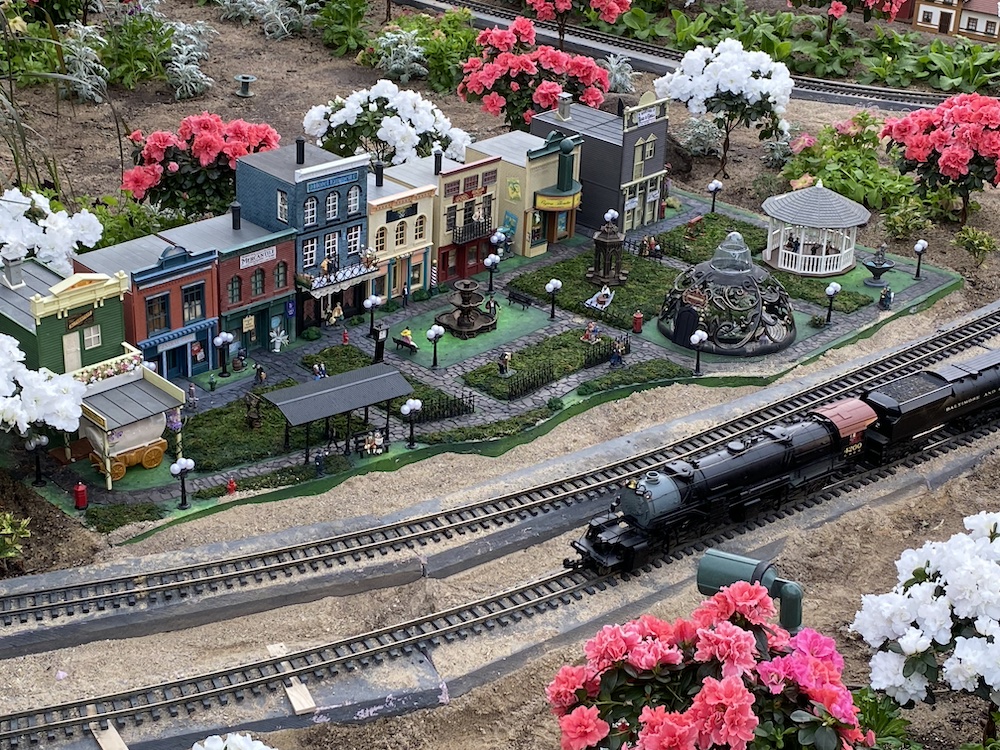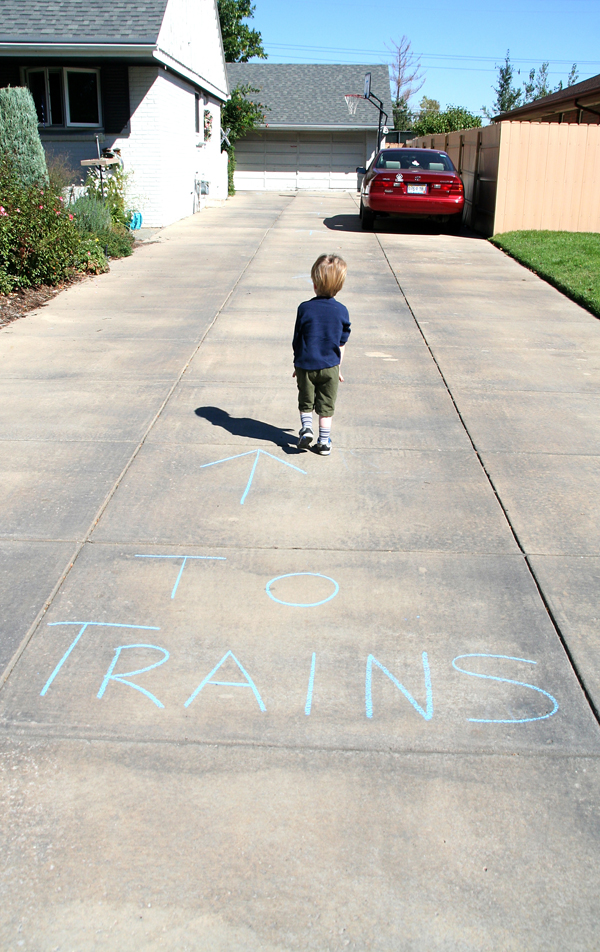
No matter how many (or few) living, breathing people attend your open house, Murphy—that legislator of doom and gloom—will do his best to show up and wreak havoc. Fortunately, there are some things you can do to keep him from raining on your parade. Let’s start with just that—rain.
Weather
You can’t control the weather. If the skies are gonna open up and dump on you the day of your open house, screaming and hollering at the weatherman won’t change it. Chances are, if it’s pouring rain, people aren’t going to tour, so you’re largely off the hook anyway.
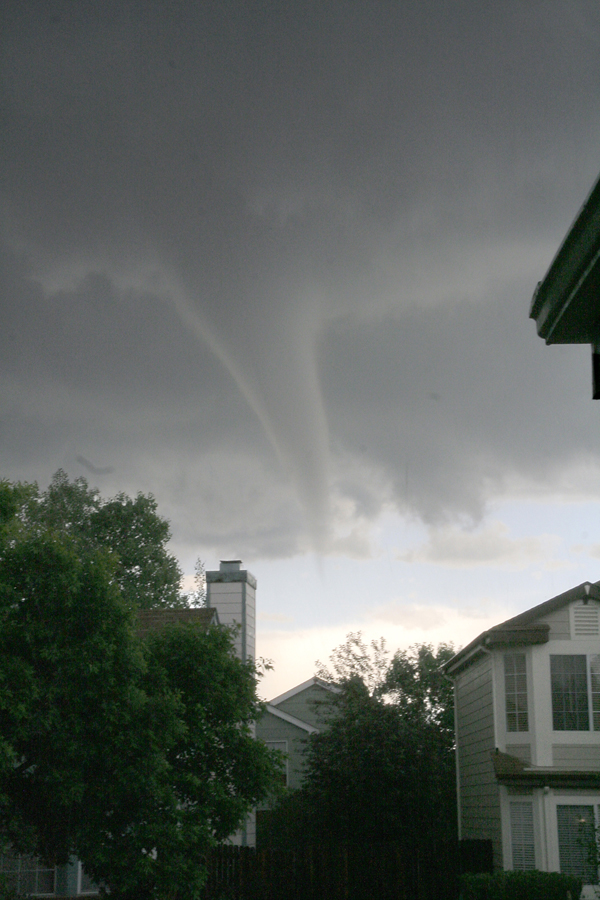
Sometimes, though, the bad weather strikes before your open house, leaving you with a monumental clean-up task on top of your other chores to get ready. All you can do is take it in stride and prioritize your tasks once the weather-related interruption is addressed.
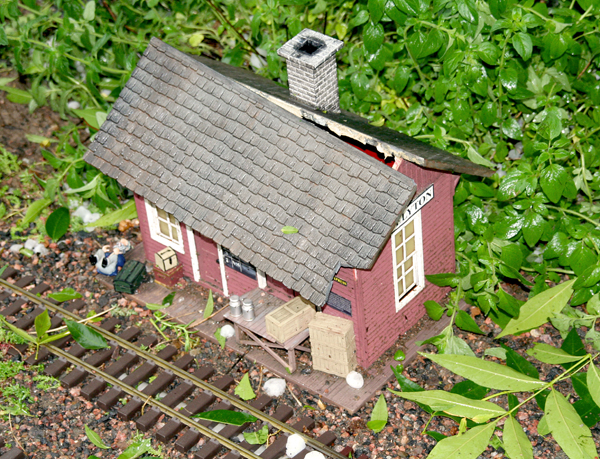
While you can’t control the weather, you can plan for it to some extent. If you’re in an area that’s prone to seasonal afternoon thunderstorms, plan your open house for the morning before storms have a chance to build up. Also, how does the sun affect your railroad? Does it look better in the morning or afternoon? Do you have troubles with heat kinks in the rails at certain times of the day? If it is going to be hot, borrow or rent a temporary canopy to provide some protection for your guests.
Children
Most visitors to garden railroads are courteous people. I’ve yet to have an open house, or even visit one, where I met anyone who didn’t act like an adult: that is, with the exception of the ones who aren’t supposed to—children. Kids are a fact of life at open houses and, despite the best wishes and intentions of their parents and hosts, they’re still kids, not miniature adults. Kids will do kid things, especially when trains are involved. They’ll run full-tilt around the perimeter of the railroad, chasing the train, or look for a convenient place to step over the tracks to make a “tunnel” for the train. (This, I’ve found, is pretty universal among kids, even the most well-behaved ones.) I’m not suggesting that you condone such behavior, and you are well within your bounds to discourage it for safety reasons. Just be aware that it will happen, so plan accordingly.
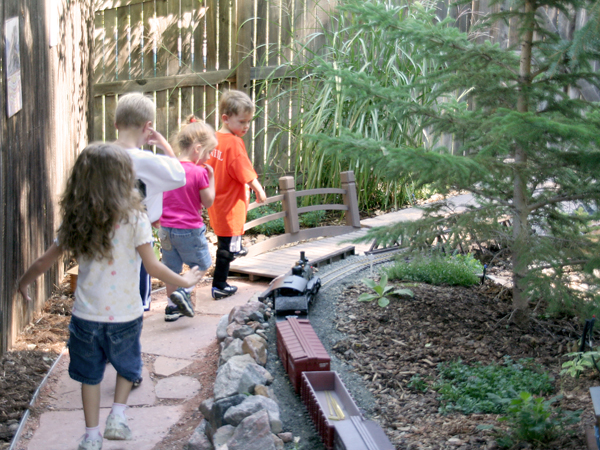
The key with kids is to involve them in the open house—give them something to do. One popular thing is to send them on a scavenger hunt. Hide things around the railroad, then give them a list of things they have to find. They’ll still run around, but with a purpose. And it’s fun for the adults, too, on a different level. It invites them to look more closely at what you’ve created in the garden. You can use your scavenger-hunt list to direct their attention to your favorite scenes.
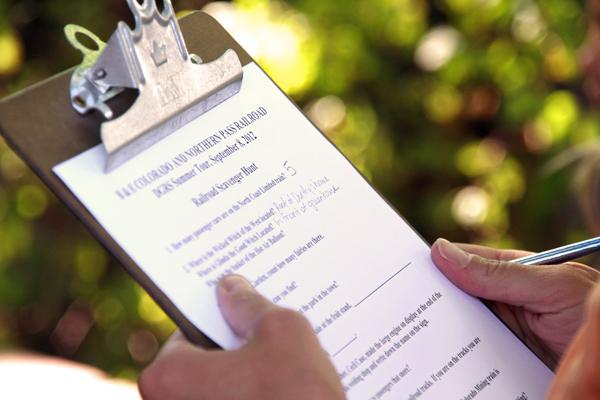
With that scavenger-hunt list, you may also want to print up a “Frequently Asked Questions” list to hand to your visitors, telling of the history of the railroad, its construction, and answering that question that never seems to go away, “What do you do when it rains?” While they may or may not read it while viewing the railroad, they’ll have it to look at later.
Access
Depending on how your yard is set up, it may be advisable to have separate entrance and exit points, especially if you’re going to be hosting large numbers of people.
Gates through fences are natural bottlenecks, and your railroad may have other ones, depending on how it’s laid out. Rope off areas where you don’t want people walking; if it remotely looks like a path, someone’s gonna walk on it.
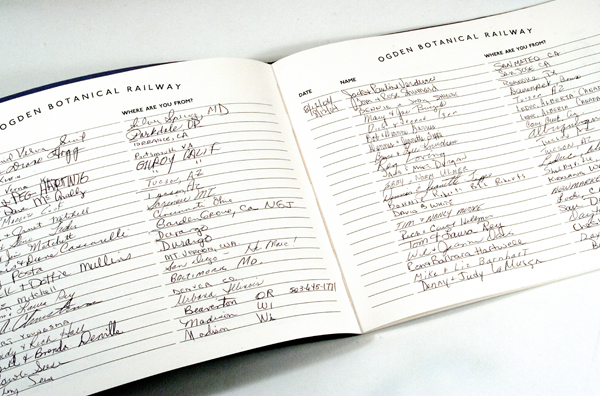
Don’t forget a guestbook. It’s always nice to have a record of who came to visit and what they thought. Put this in a place where you’ll get fairly high traffic, to encourage the most people to sign the guestbook. By the gate probably isn’t the best place, though, as it exacerbates the bottleneck there.
Trains and track
Now, to the star attractions—the trains themselves. Trains running, after all, are what people are coming to see. It’s always disappointing to go to a railroad and not see trains running, no matter how well-done the garden. A garden or railway is never appreciated to the same extent as when things are working properly, so make sure you have trains that are going to perform without issue. You’ll have your hands full talking to guests and will not have the time to troubleshoot whatever bugs might crop up.
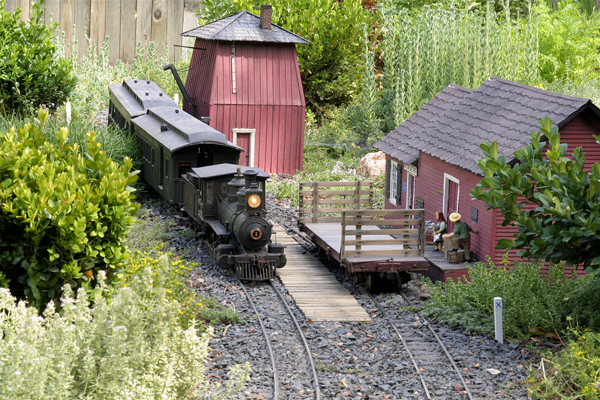
If you’re running track power, make sure your track is clean the day before. Check all your rail joints and make sure the electrons are flowing smoothly. If you’re running battery power, make sure your batteries are fully charged the day before. Give the track a once-over the morning of your open house to get rid of debris or other things that might hinder operations. Clean your switches and make sure the points are firmly against the stock rails. (Hint: you can take a short length of Scotch tape and temporarily tape the points in place so they can’t open and cause derailments.)
A lot of people are tempted, at open houses, to run their favorite train. Instead, I suggest you run your most reliable train. If it also happens to be your favorite, consider yourself lucky. Otherwise, find a siding to sit your favorite train on so people can appreciate it as you do. Your most problem-free locomotive is the best candidate to provide the kinetic entertainment.
Some hosts have friends over to run the trains on their railroad for them, so the host can be free to socialize with the guests. If it’s practical to do so, this is a good approach, especially on larger railroads that require more attention to keep track of what train is where. If you’re running live steam, it’s virtually imperative to have dedicated operators. There’s just no way you can safely focus on your locomotive and talk to your guests at the same time.
Sound systems: it’s a pet peeve to visit a garden railroad and hear the trains running in the backyard as soon as I get out of my car. Some people turn up the volume as a way to get people in the gate. The people coming to your open house most likely aren’t just casual pedestrians and don’t need to be lured in by loud noises. I love sound as much as anybody but I also enjoy carrying on a conversation with my guests without being drowned out by the trains—especially if there’s more than one train running. Consider the volume of your sound system and maybe take it down a notch or two.
Of course it isn’t possible to plan for every eventuality. There’s always the potential for some random thing to go wrong; a broken wire, a guest who accidentally knocks your prize locomotive off the track, spilling lemonade on your controller, whatever. Murphy is a determined guest. But, with a little planning and the occasional reminder to yourself that you’re having a fun day playin’ trains no matter what happens, your open house can be a pleasant and relaxing activity.






